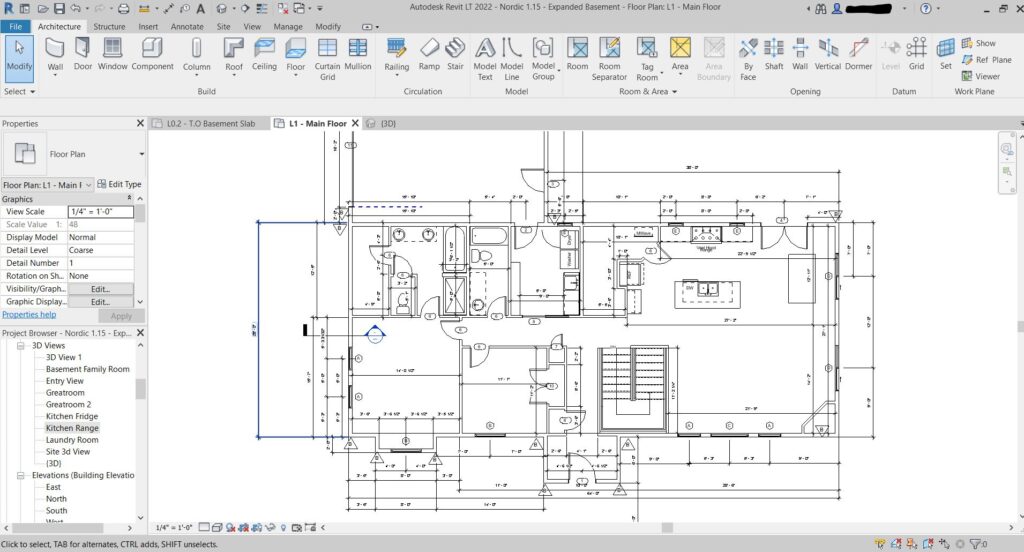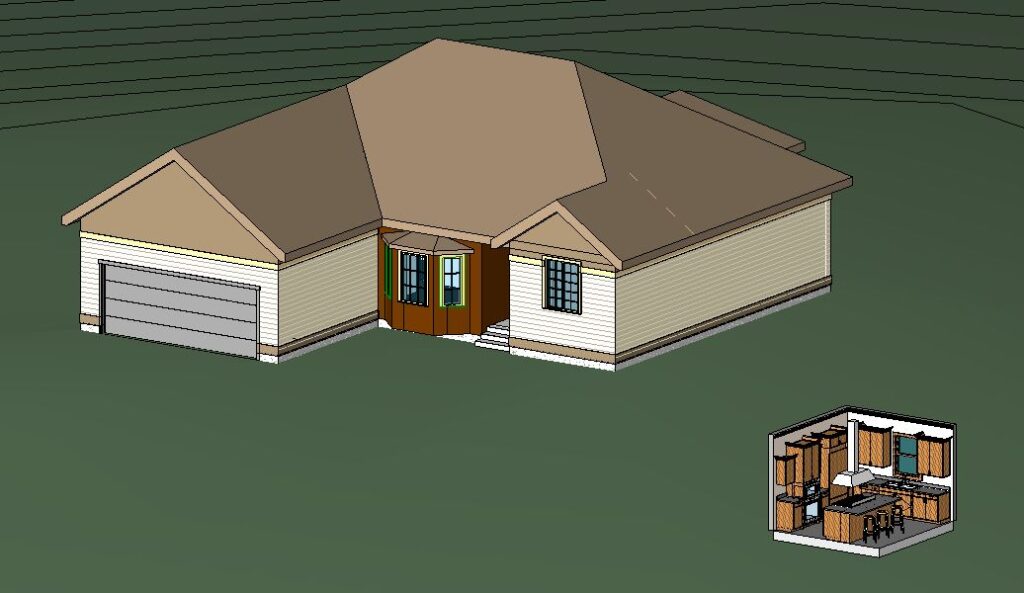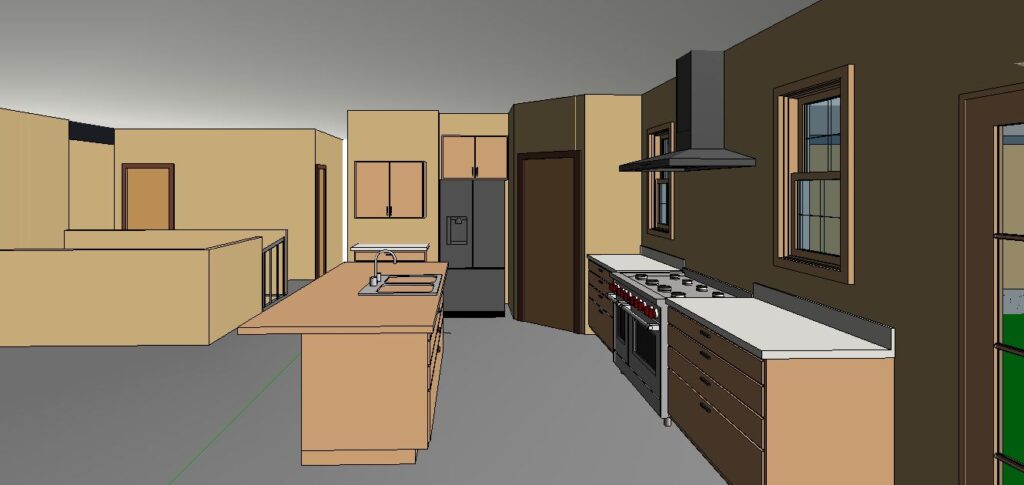
While you can technically draft a floor plan with pencil and paper, there are a number of programs available to make the task easier. Fourteen years ago, I learned how to use Revit, by Autodesk. I recently used Revit to draft my custom home floor plan. This got me thinking about how hard it would be for someone with no experience to learn how to use this powerful program.
A typical user can become proficient in the basics of Revit within a few months. This will require step by step instructions from a book or online tutorials. The time frame will also be impacted by how well you know floor plans to begin with.
For your reference, I’ll walk you through my personal history with Revit. We’ll cover where I learned it, how long it took me to be proficient, why I chose to use it for my custom house, and what considerations you might make in deciding if it is right for you.
Where I Learned Revit
In the fall of 2007, I enrolled in CM 155 – Architectural Drafting. It was the second course required for my major of Construction Management. My professor was a talented draftsman and contractor. But he was proficient in AutoCAD. The program had recently decided that CM 155 was going to teach a fancy new drafting program called Revit.
Our class was required to buy a step-by-step book that walked us through learning the program. While our professor could provide great instruction and insight as to the technical aspect of drawing a floor plan, he had no technical knowledge of Revit. Thus we were on our own in the computer lab to figure it out.

This was back before YouTube had really taken off. So the step-by-step book was pretty typical instruction for the time. And it worked. Over the course of the term, most of the students in my class were able to figure it out and draft a decent floor plan.
The following term, the professor asked me to be his TA. So for the next few semesters, I became the resident expert on Revit, helping other students work through the same book I used to learn the program.
How Long did it Take me to be Proficient in Revit
From the time I started using Revit, I would say I was relatively proficient within two months. I consider myself fairly adept at using and learning new computer programs. Over the course of a 16 week semester, I witness and helped a large number of student become moderately proficient in the program.
If I were to further quantify my time, I would say I probably spent 5 to 10 hours a week for those 8 weeks. So somewhere between 40 and 80 hours of dedicated time working through the program could get you to a proficiency needed to draft a floor plan.
When I say “proficient”, I don’t mean that I’m capable of harnessing the full power of Revit. Revit has tremendous power to help an architectural firm or contractor. But for my purposes of designing a custom floor plan, I think I’m hardly utilizing the full potential of the program. But that is fine, because the little I am using the program for is perfect for what I need.
A final note here is that I’m still learning. As a novice drafter, I’m not in Revit every day. So I don’t remember all of the functionality of the program. But there are a lot of content creators producing great tutorials for Revit. Recently, I was working on my electrical floor plan and needed to remember how to place all off the necessary components. After a quick google search, I was watching a 15 minute tutorial that covered everything I needed in depth.
Why I Used Revit for My House
Before Revit, AutoCAD was the standard computer drafting software. I have dabbled very little in AutoCAD, so I am by no means an expert in the program. But in comparing these two programs, Revit is a far more capable program. If I want to draw a wall in AutoCAD, I need to make four lines showing the rectangular shape of the wall. Once I’ve done that, I have a two dimensional plan of a wall.
By contrast, in Revit I would select a wall component, make two clicks (start and end points), and the program not only creates a two dimensional plan of a wall, but I also have a three dimensional rendering of that wall. For a layperson drafting their own floor plan, being able to look at three dimensional renderings is invaluable.
As seasoned drafter or architect can look at a two dimensional plan and identify problem areas. That just comes with experience. They’ll be able to identify issues with the roof line, ceiling height issues with structural elements, or other problems that are not apparent to the layperson. But with a program like Revit, the layperson doesn’t have to try and extrapolate problems from the two dimensional plan. The layperson can pull up the three dimensional rendering and make adjustments accordingly.

What Considerations You Might Make Regarding Revit
Before you even consider dabbling in a drafting software like Revit, consider the steep learning curve this may present. The program is not impossible, but will take some time to learn. Beyond that, drafting a floor plan is an incredibly complex process. Sure, a pro can knock out a floor plan in short fashion. But for the typical owner-builder, the process could take months.
If all that doesn’t scare you off, you’ll need to get a license for the program. An annual subscription for a license to Revit costs $2,545. The full blown program has a ton of features that benefit architects and engineers collaborating on massive models. For residential use, they have a “light” version called Revit LT. This light version costs $475 annually for a subscription. You could also pay $60 per month. So the program is not cheap or overly affordable.
Autodesk, the company that makes Revit, has an incredible student program. So if you are a student at a high school or University, you can qualify for a free license for the duration of your education. This is a great way to get access to the program, learn it, and decide if it is the right choice for you.
There are other programs that are free, or inexpensive. I don’t have a lot of experience with them, and can’t make a recommendation. I have tried to use Sketchup a few times. But coming from a background of Revit, I found it challenging to make details plans I am able to do in Revit. If you’re looking to make construction ready floor plans, Revit will be a better option. If you’re just looking to get a really nice draft that you can take to a professional drafter to finish, these other programs are probably great options.
Conclusion
Drafting your own floor plan can be an awesome experience. But it is definitely not for everyone looking to build a custom home. If you are absolutely certain that you need to design your own floor plan, and you have the time and resources to learn and use Revit, I highly recommend it as a drafting software.

